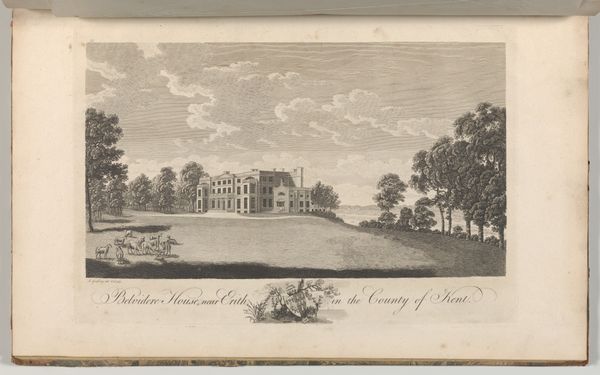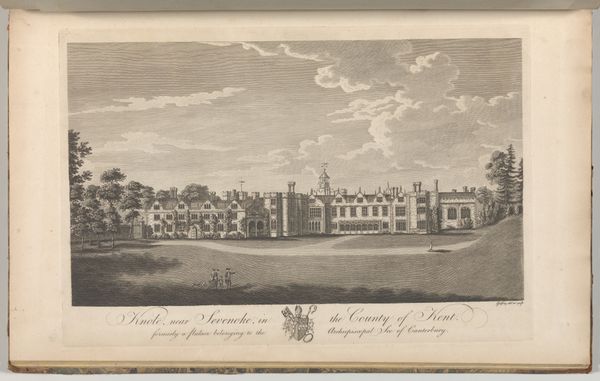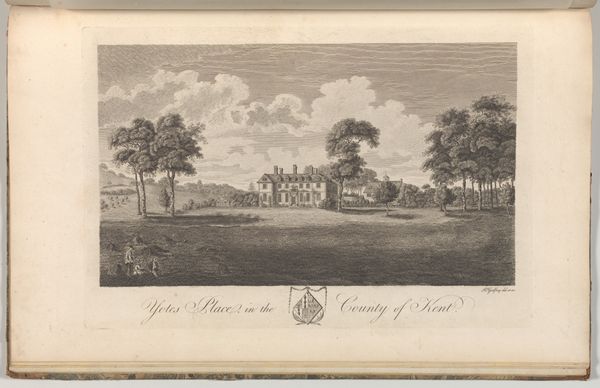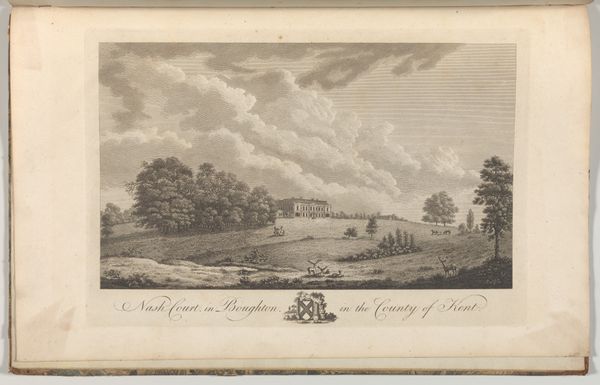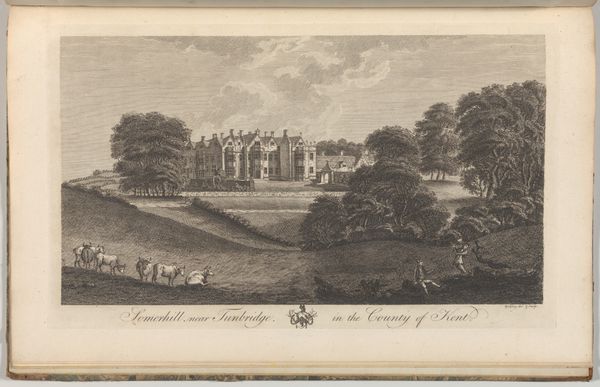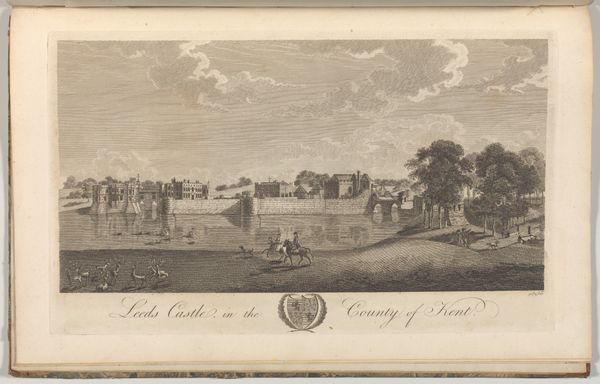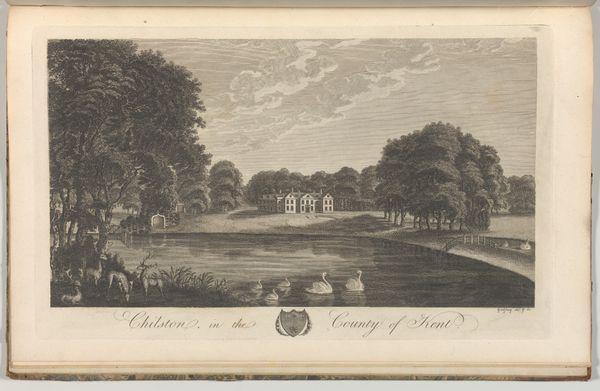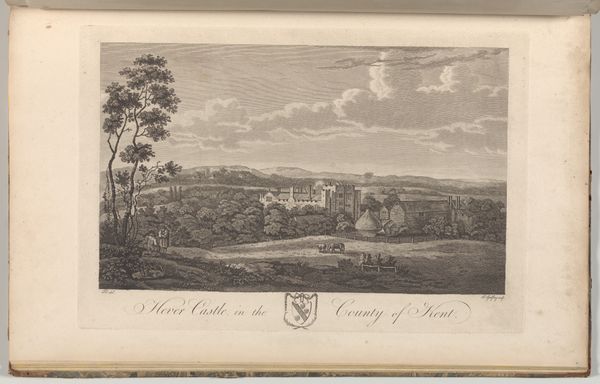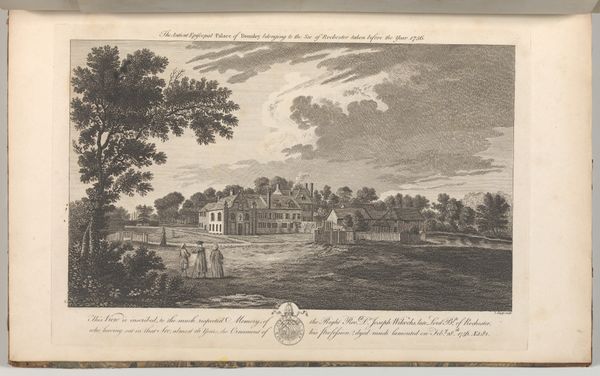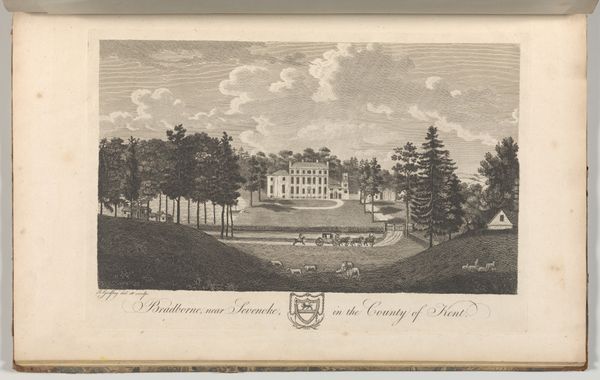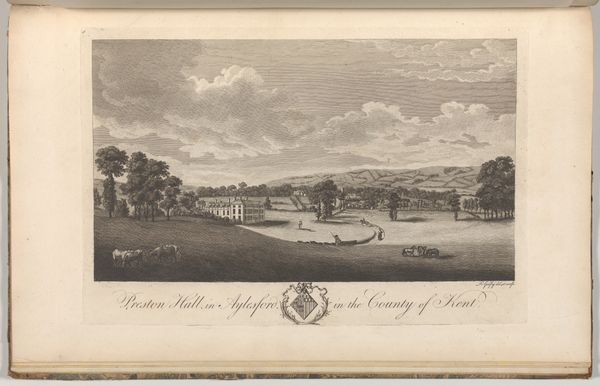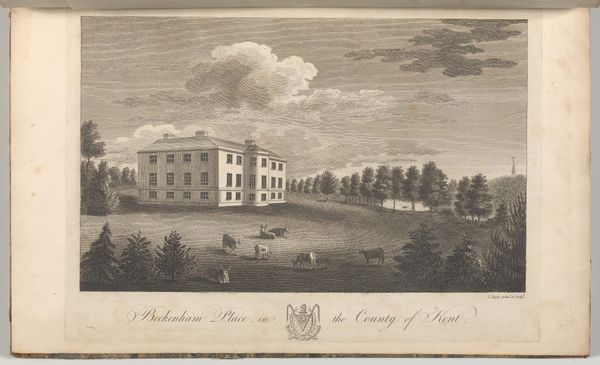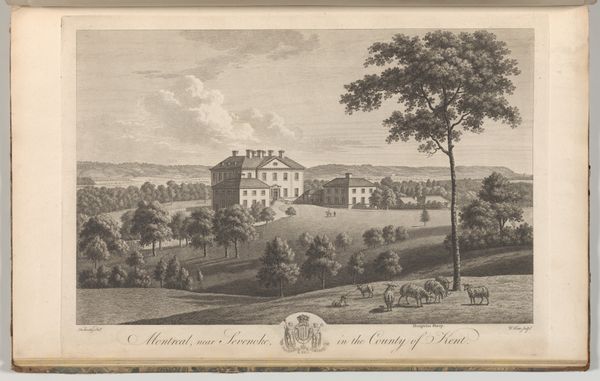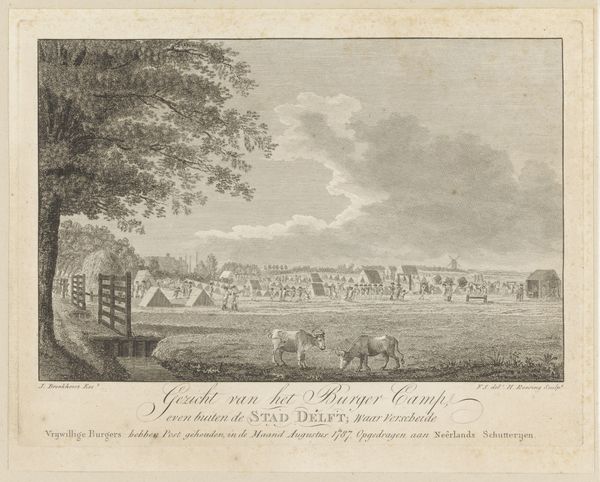
Bradbourn in the County of Kent, from Edward Hasted's, The History and Topographical Survey of the County of Kent, vols. 1-3 1777 - 1790
0:00
0:00
drawing, print, etching, paper, engraving
#
drawing
#
neoclassicism
# print
#
etching
#
book
#
landscape
#
paper
#
history-painting
#
engraving
Dimensions: Book: 17 5/16 × 11 × 13/16 in. (44 × 28 × 2 cm) Sheet: 16 15/16 × 10 5/8 in. (43 × 27 cm) Plate: 10 1/16 × 14 in. (25.5 × 35.5 cm)
Copyright: Public Domain
Editor: This is "Bradbourn in the County of Kent," an engraving by Richard Bernard Godfrey, dating from sometime between 1777 and 1790. I'm immediately struck by the serenity of it, this almost perfectly symmetrical composition. The house, the trees… everything seems to mirror itself. What compositional techniques is the artist using? Curator: Note how the eye is led first horizontally across the placid water, then directed upward by the building, culminating in the textured clouds. The mirroring effect you observed is significant. Observe how the structure divides the image into distinct spatial registers; each contributes to an overall sense of balance and idealized order. Can you identify how the linear marks contribute to depth and perspective? Editor: Yes, the artist employs varying densities of lines to create a sense of recession into the distance. The marks in the foreground are bolder and more defined, while those further back become fainter, contributing to the illusion of depth. Are you implying there is tension here between the flatness of the etching, and the 3D illusion? Curator: Precisely. The medium is inherently flat, yet Godfrey manipulates line and tone to create depth. Notice also the strategic placement of the trees; these function as framing devices and direct our sight toward the focal point—the country house itself. Consider how such elements guide visual interpretation within this carefully constructed landscape. Does the contrast between light and dark also influence perception? Editor: Definitely. The light reflects off the water, leading to the structure. The contrast defines the house's contours. It seems so carefully rendered, almost too perfect. It feels different than how you might observe a house, for instance, on your daily stroll. Curator: Your observation is insightful. The scene is not simply a mimetic representation, but a stylized and idealized image. What elements strike you as particularly "stylized?" Editor: Well, the perfectly still water, for one. And those very fluffy clouds feel like ornamentation. It seems almost like a stage set or a carefully arranged tableau, instead of an attempt to create something from lived experience. Curator: The strategic arrangement of each component reflects aesthetic and ideological choices prevalent in Neoclassical art. This aesthetic emphasized reason, order, and harmony, qualities demonstrably present in the image's structural design and execution. Considering those points, does this change how you see the image now? Editor: Yes, it is fascinating how close examination reveals a narrative not only about a place but also about the values of the period and the conscious artistic decisions made to express them.
Comments
No comments
Be the first to comment and join the conversation on the ultimate creative platform.
